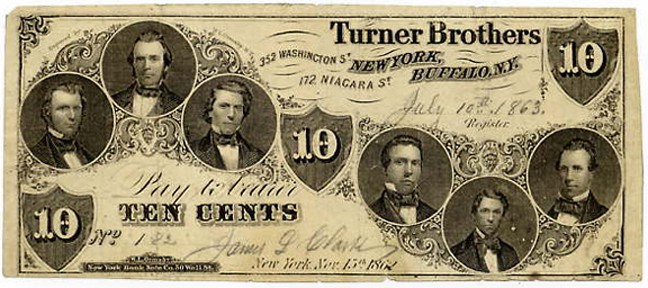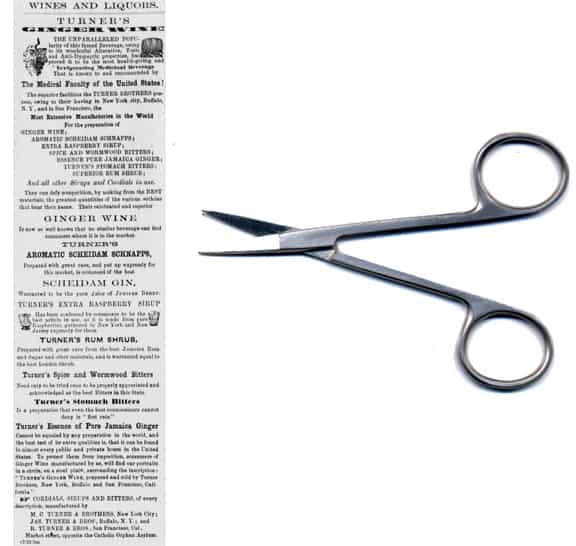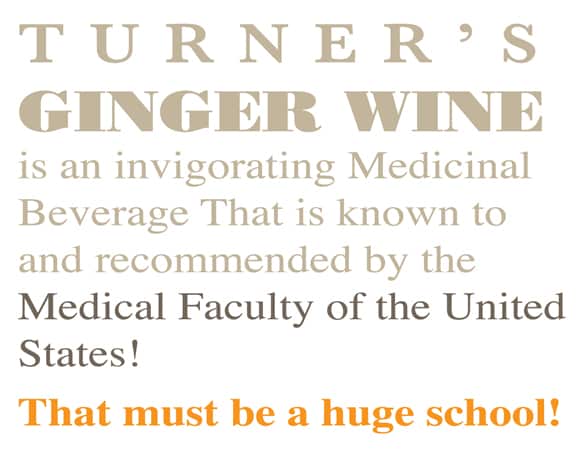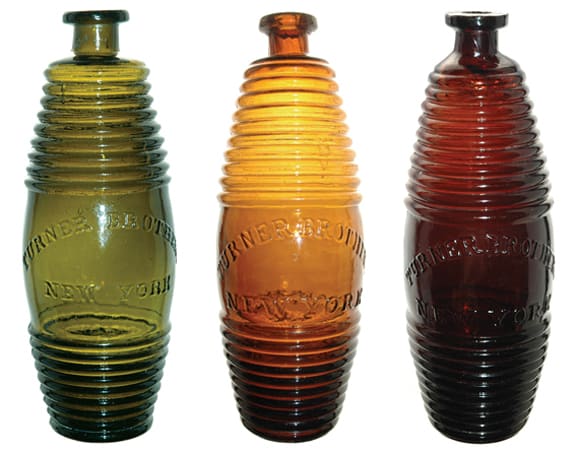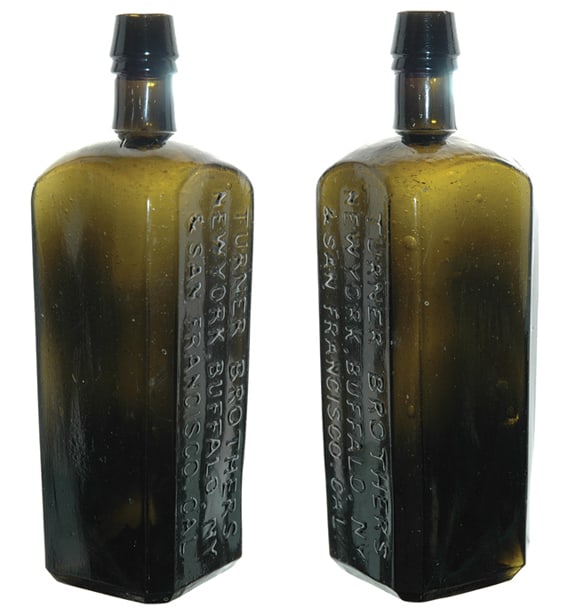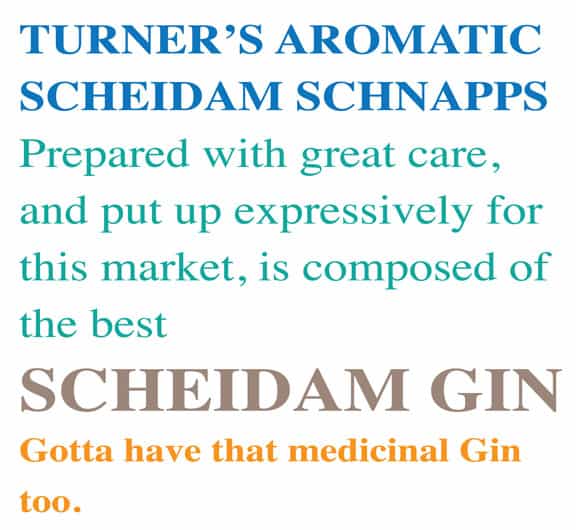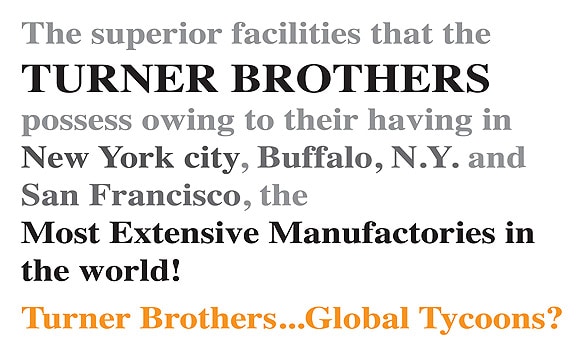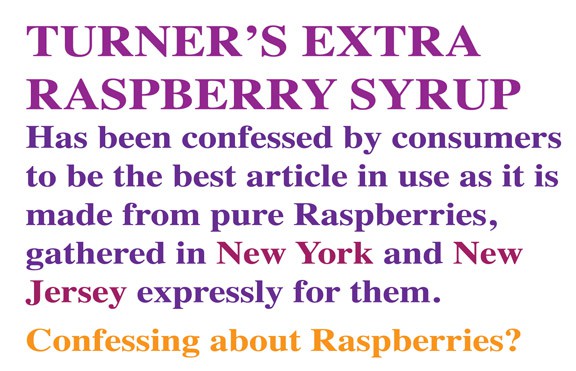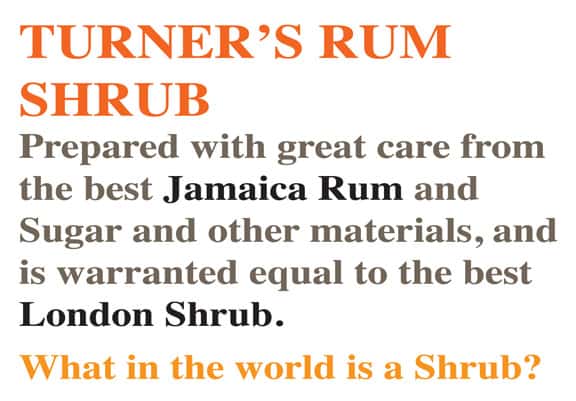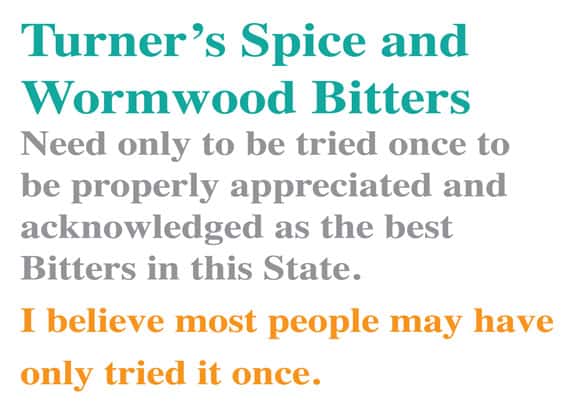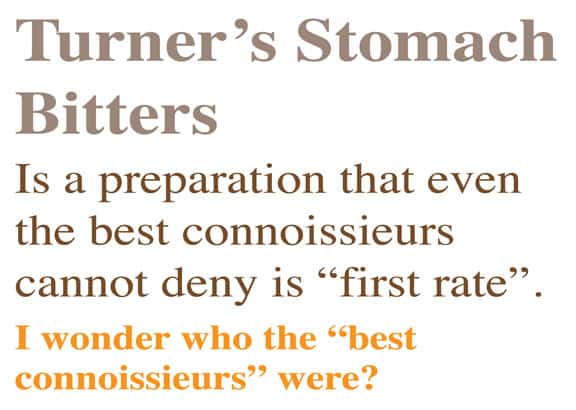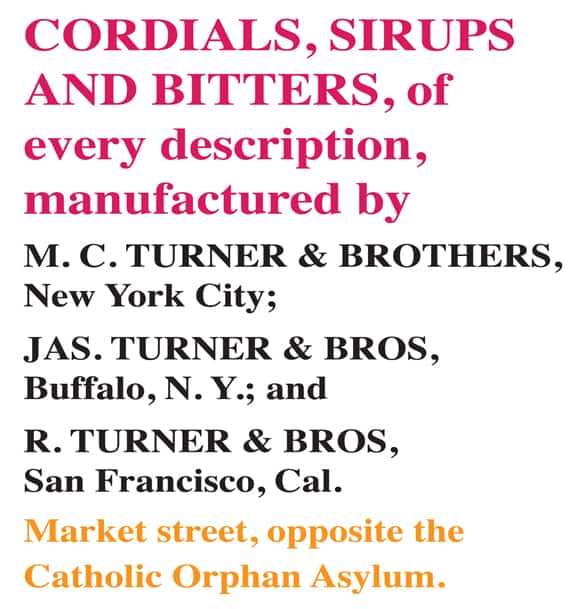Dissecting a Turner Brothers Advertisement
04 November 2013
![]() It is interesting to see liquor merchants pushing their products for medicinal purposes including wines such as Bininger’s Knickerbocker Wine Bitters. Sharing page space within the Daily Sacramento Union on 29 December 1871, with an equally tall Sterne’s Celebrated Congress Bourbon Bitters advertisinent, was this outstanding Turner Brothers advertisement (see below). I just love the Turners brand and have written about them before:
It is interesting to see liquor merchants pushing their products for medicinal purposes including wines such as Bininger’s Knickerbocker Wine Bitters. Sharing page space within the Daily Sacramento Union on 29 December 1871, with an equally tall Sterne’s Celebrated Congress Bourbon Bitters advertisinent, was this outstanding Turner Brothers advertisement (see below). I just love the Turners brand and have written about them before:
Barrel Series – Turner Brothers New York & San Francisco
A ‘short’ Turner Brothers New York figural barrel
I thought it would be fun to dissect and isolate the various claims and information.
Read: Aromatic Schiedam Schnapps – Udolpho Wolfe
Shrub: In terms of mixed drinks, shrub is the name of two different, but related, acidulated beverages. One type of shrub is a fruit liqueur that was popular in 17th and 18th century England, typically made with rum or brandy mixed with sugar and the juice or rinds of citrus fruit. A second type of shrub is a cocktail or soft drink that was popular during America’s colonial era, made by mixing drinking vinegar syrup with spirits, water, or carbonated water. The name also is applied to the sweetened vinegar-based syrup, also known as drinking vinegar, from which the latter drink is made. Drinking vinegar is infused with fruit juice (and at times herbs and spices) for use in mixed drinks. [Wikipedia]
Read: What are all these Wormwood Bitters?
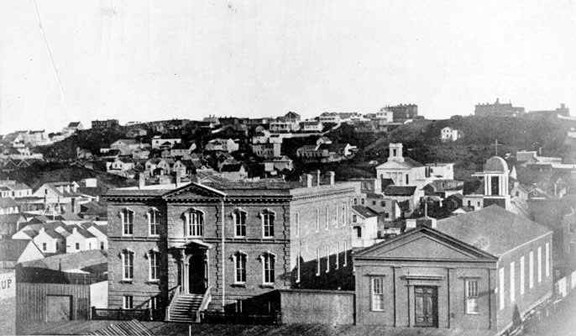
R. Turner & Bros (S.F.) would have been across the street from the San Francisco Catholic Orphan Asylum [center], 1856. San Francisco Public Library Historic Photo collection Title St. Patrick Orphan Asylum on Market St. Notes On front: “St. Patrick Orphan Asylum on Market St. 1856 on present site Palace Hotel. Built 1852 (Aug. 18)”.
The Making of Market Street
In the early sixties the only improvements on the street were east of Kearny street. To the west an effort was being made to get rid of the sand incubus with the aid of the so-called “paddies,” which were first operating under the direction of S. D. Gilmore, and later by David Hewes, who was christened “Paddy.” A channel was cleared through the sand and steam dummy and a few rattle-trap cars that seemed ready to fall apart at the least provocation as they jolted over the loosely laid rails, ran to Hayes Valley and the Mission. On the fringe of Happy Valley, where the Palace stands, were the Roman Catholic Orphan Asylum, the Sacred Heart School and some other scattered buildings. From Second street down to the water’s edge, which then was at about Steuart street, were a lot of lumber yards and mills and factories representing a variety of local industries, and numerous ramshackle structures labeled “Mechanics’ Exchanges,” where the toilers of the vicinity exchanged lucre for liquor. At the foot of Market street a clumsy ferry-boat owned by a man named Charles Minturn made periodical trips to the Oakland shore. It was half a dollar a trip. It wasn’t much of a prospect, was it? [San Francisco History – The Making of Market Street]

